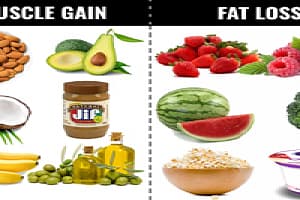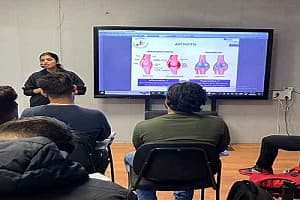7 Tips to Lose Fat and Gain Muscle
Created On: Nov 28, 2021

Embarking on a weight loss journey means aiming at good fat loss with muscle gain, right? Here are some of the weight loss tips which will help you harness a healthy and fit lifestyle for long!
We all have unique body types and this is the reason everyone’s weight loss journey is different – our metabolism, food habits and lifestyle factors add on to it. According to the experts, in the first 4-6 weeks, we lose weight rapidly, but some may shed kilos more rapidly than others depending on the age, gender and activity level. Let’s discuss tips on losing fat more efficiently.
- Focus on burning fat: Most of the weight loss initially comes from carb stores, proteins and water and to lesser extent body fat. We need to follow a diet plan that helps accelerate fat loss by shedding body fat and not other essential nutrients of the body. We have to avoid deficiency of any nutrient and burn fat in a healthy manner.
- Set realistic goals: One can expect to kick-start by losing more weight initially but one should not get carried away and go overboard with excitement because of that. Extreme weight loss in a short amount of time is not a healthiest option for your body to go through. It can also make it difficult to maintain your weight later. So try to set realistic goals and take things one kilo and one inch at a time.
- Don’t cut your calories drastically: In order to lose weight, one should have fewer calories and follow an exercise regimen. However, cutting your calories too much can to a greater loss of muscle rather than fat. Instead, aim to moderately reduce the number of calories you consume per day to minimize muscle loss while still facilitating fat loss.
- Start measuring and tracking your food: People tend to underestimate the amount of food they actually eat. Two ways to avoid this is to measure your portions and keep track of what you are eating. In addition to the calories, you may also want to monitor the macronutrients like carbs, fat and protein.
- Fill up on healthy stuff first: You can reduce the number of calories you consume by eating more leafy greens like spinach, lettuce, fruits, vegetables, complex carbs like oatmeal, quinoa, barley, legumes and rice, foods high in omega-3 fatty acids like salmon, chia seeds, lean proteins such as chicken breast, cottage cheese and a fewer sugar-sweetened products, beverages, cutting down on processed meats and fried foods.
- Eat plenty of protein: Protein is important for maintaining the muscle you have and supporting new muscle growth, especially when losing weight. Eating plenty of protein with a reduced calorie diet with weight training may not help you gain muscle but it will help your maintain muscle with increasing fat loss.
- Exercise: Exercise is the most effective way to encourage fat loss rather than muscle loss. But try not to go overboard. Workout out too hard or too often can lead to a burnout. Also, it can increase risk of injury. So be sure to give yourself enough time to rest after each session. Balance out your exercise routine with the help of a good certified fitness trainer.






